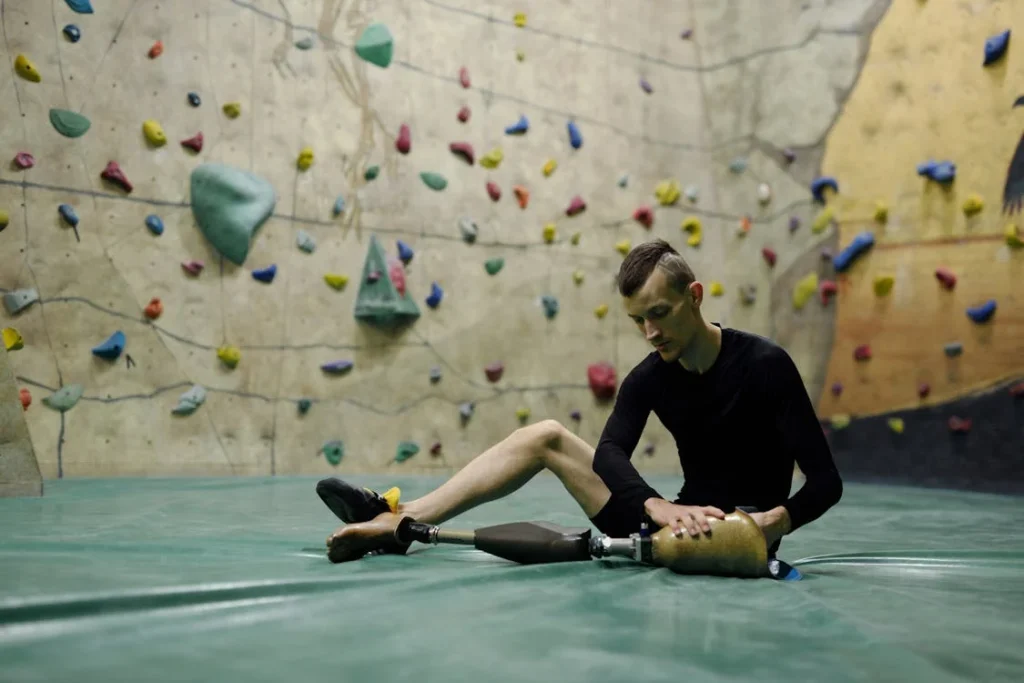Prosthetic devices are designed to restore independence and mobility, enabling users to engage in everyday activities and explore their passions. However, outdoor environments, especially those filled with sand, dirt, and debris, can pose unique challenges to maintaining your prosthetic. Tiny particles can interfere with joints, damage sensitive components, and impact overall performance if left unchecked.
Protecting your prosthetic from these elements is essential for preserving its functionality and durability. This guide provides practical advice and actionable strategies to safeguard your prosthetic, whether you’re enjoying a day at the beach, hiking through the woods, or navigating dusty urban streets. With proper care and attention, you can confidently embrace outdoor activities while keeping your prosthetic in top condition.
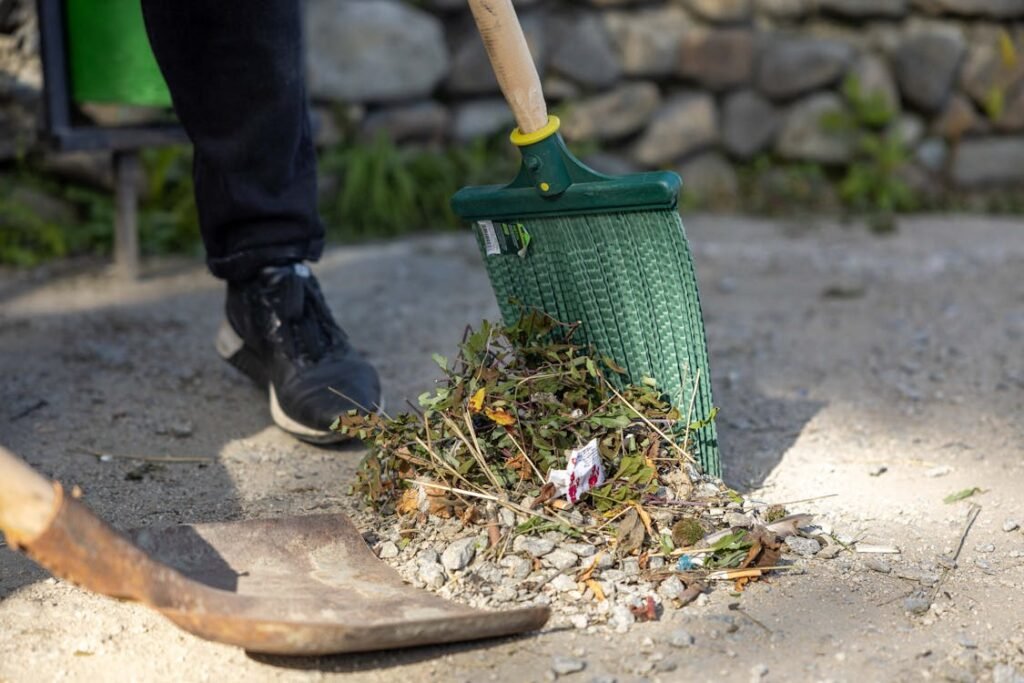
Understanding the Risks of Sand, Dirt, and Debris
Sand, dirt, and debris may seem harmless at first glance, but for prosthetic users, these environmental elements can pose significant risks.
Their small size allows them to infiltrate even the most well-designed devices, impacting performance, comfort, and durability. A clear understanding of how these elements affect prosthetics is essential for proactive care and protection.
The Hidden Threat of Sand
Sand’s fine and abrasive nature makes it one of the most challenging substances to manage. It can easily find its way into joints, sockets, and other moving parts of a prosthetic, creating friction that leads to accelerated wear and tear.
Once inside, sand can grind against components, weakening materials over time.
For electronic prosthetics, sand is particularly problematic. Tiny particles can interfere with sensors, disrupt electrical connections, or even damage internal circuitry.
In humid conditions, sand often clings to surfaces or mixes with moisture, forming a gritty residue that is harder to remove and potentially corrosive.
The Challenges of Dirt and Mud
Dirt may not seem as intrusive as sand, but it presents unique risks to prosthetics. It often contains organic matter, minerals, and moisture, creating an abrasive and sticky mixture that can clog components and compromise functionality.
Dirt buildup in hinges, pylons, or footplates can restrict movement, leading to uneven performance or reduced stability.
Mud, a combination of dirt and water, can exacerbate these issues. When dried, mud hardens into a crust that is difficult to remove, often requiring thorough cleaning to prevent damage.
Additionally, prolonged exposure to moisture in mud can cause rusting in metal components or weaken adhesives used in the prosthetic’s construction.
Debris in Everyday Environments
Debris, ranging from small pebbles to fragments of glass or metal, poses a physical threat to prosthetics. Larger pieces can become lodged in the device, creating instability or causing visible damage.
For foot prosthetics, debris can disrupt balance, making it harder to walk on uneven surfaces safely.
Urban environments, in particular, can expose prosthetics to debris such as oil, grease, or construction materials. These substances may leave a residue that is challenging to clean and potentially harmful to the prosthetic’s finish or mechanical parts.
Long-Term Impact on Prosthetic Performance
The cumulative effects of exposure to sand, dirt, and debris can significantly shorten a prosthetic’s lifespan.
Friction caused by trapped particles wears down materials, while corrosion from moisture-laden dirt weakens structural components. Over time, this damage leads to more frequent repairs, reduced performance, and, ultimately, the need for replacement parts.
Ignoring these risks not only affects the functionality of the prosthetic but can also impact the user’s comfort and mobility. A poorly maintained device may cause irritation, pressure points, or discomfort, making it harder to rely on the prosthetic for everyday activities.
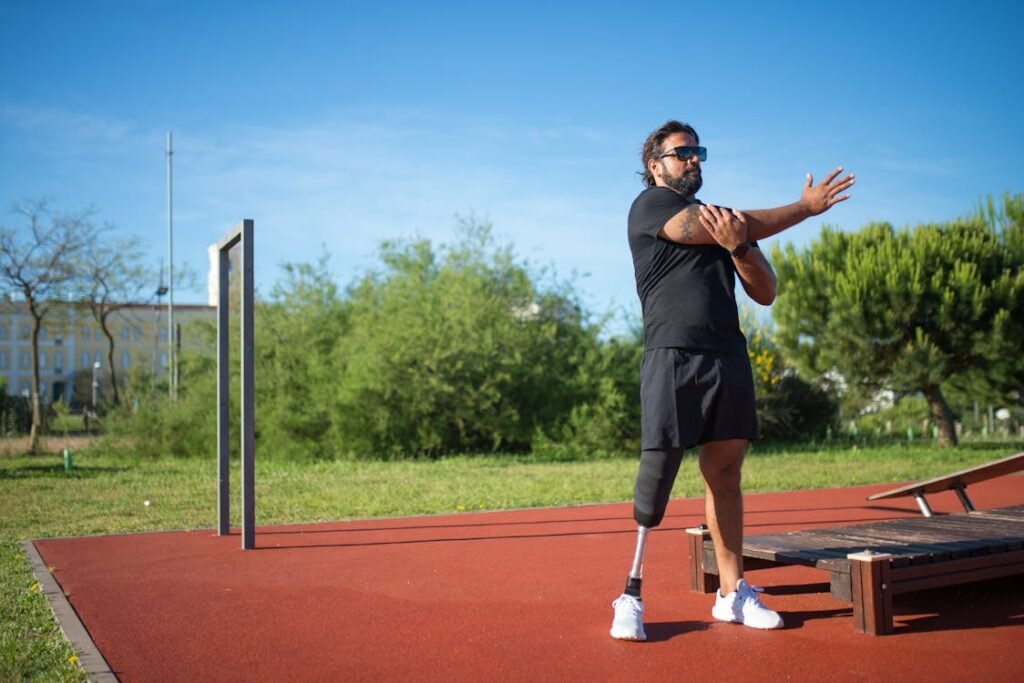
Practical Steps for Preventing Damage
Taking proactive measures to protect your prosthetic from sand, dirt, and debris ensures it remains functional and comfortable in any environment.
These steps are not just about safeguarding the device but also about enhancing your overall experience by reducing the likelihood of interruptions, repairs, or discomfort.
By integrating these strategies into your routine, you can confidently navigate challenging environments without compromising the performance or durability of your prosthetic.
Establishing a Protective Barrier
Creating a barrier between your prosthetic and the environment is one of the most effective ways to prevent damage. Protective covers are a versatile solution, designed to shield your prosthetic from direct exposure to harmful elements like sand, dirt, and moisture.
Neoprene or silicone covers are particularly effective, as they are durable, flexible, and resistant to abrasive particles.
For specific activities, such as walking on the beach or trekking through muddy trails, waterproof covers provide additional protection. These covers not only keep sand and dirt out but also prevent moisture from seeping into mechanical or electronic components.
When selecting a cover, ensure it fits snugly without restricting movement, as this allows you to maintain full functionality while protecting the device.
Adapting to Environmental Conditions
Every environment presents unique challenges that require tailored strategies to protect your prosthetic. For example, in sandy areas, avoid sitting or resting directly on the ground, as this increases the risk of sand entering critical components.
Instead, use a portable chair, mat, or another clean surface to create a buffer.
When walking on loose or shifting surfaces, such as dunes or dry dirt paths, adjust your movement to minimize the disturbance of particles. Taking controlled steps reduces the amount of debris kicked up, lowering the chances of it settling into joints or footplates.
For upper-limb prosthetics, wearing a lightweight sleeve during outdoor activities helps prevent particles from reaching sensitive areas like joints or connectors.
Maintenance Before Exposure
Preparing your prosthetic before entering high-risk environments can significantly reduce the potential for damage. Cleaning and lubricating moving parts ahead of time ensure that joints and mechanisms operate smoothly, even if debris makes contact.
Lubricants specifically designed for prosthetics form a protective layer that reduces friction and makes it easier to remove sand or dirt later.
Inspecting your prosthetic for vulnerabilities is another essential step. Look for any loose screws, worn seals, or damaged areas that could allow particles to infiltrate the device.
Addressing these issues before exposure strengthens the prosthetic’s defenses and helps you avoid unnecessary disruptions.
Mindful Usage During Activities
How you use your prosthetic in challenging environments plays a significant role in its protection. If you’re engaging in physical activities, such as hiking or sports, be mindful of situations where debris might accumulate.
For instance, try to avoid standing in areas where sand or dirt can build up around the footplate or socket. If unavoidable, periodically check and clear out any visible particles during breaks.
For upper-limb prosthetics, be cautious when placing the device on dusty surfaces. Small particles can easily transfer to joints or openings, causing wear over time.
Carrying a clean cloth or towel provides a convenient way to create a protective layer when resting the prosthetic on the ground or other surfaces.
Preventing Long-Term Accumulation
Prevention is not just about immediate protection—it’s about forming habits that minimize long-term exposure.
Simple practices, such as brushing off your prosthetic after each outing or wiping down the device with a damp cloth, can prevent small amounts of debris from accumulating over time.
Storing your prosthetic in a clean, secure location when not in use further protects it from ambient dust or dirt. Avoid leaving the device in high-risk areas, such as near construction sites, dusty rooms, or sandy environments.
A dedicated storage case with compartments for components and tools ensures the prosthetic stays clean and ready for use.
Combining Protection With Regular Monitoring
Even with the best preventive measures, regular monitoring is crucial to ensure your prosthetic remains in optimal condition. After exposure to challenging environments, inspect the device thoroughly for signs of debris, wear, or damage.
Addressing minor issues immediately prevents them from escalating and ensures the device continues to function reliably.
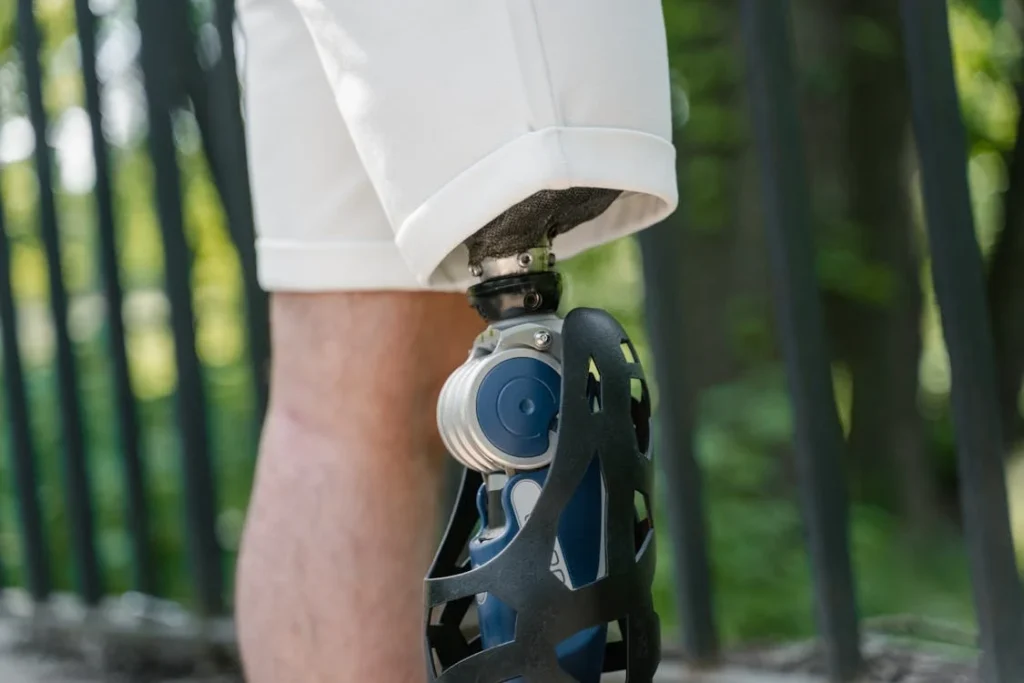
Cleaning Routines to Remove Sand and Dirt
Keeping your prosthetic clean is one of the most important aspects of maintaining its functionality and longevity, particularly after exposure to sand and dirt. Even with proactive measures to protect your device, debris can still find its way into small crevices or moving parts.
A thorough and strategic cleaning routine helps eliminate these particles before they can cause lasting damage, ensuring your prosthetic remains comfortable and reliable.
Immediate Cleaning After Exposure
Prompt cleaning is the first line of defense against sand and dirt buildup. When debris is allowed to linger, it can work its way deeper into the prosthetic’s joints, sockets, or electronic components, making removal more challenging and potentially damaging sensitive areas.
After exposure to sandy or dusty environments, begin by gently shaking or tapping the prosthetic to dislodge loose particles. This simple step prevents further contamination when moving on to detailed cleaning.
For mechanical prosthetics, use a soft brush or cloth to remove visible debris from external surfaces and joints. Avoid hard or abrasive materials that could scratch or wear down delicate components.
For foot prosthetics, pay special attention to the underside, as dirt and sand tend to accumulate in grooves or around footplates. Carefully clear these areas to ensure stable and balanced use.
Deep Cleaning for Persistent Residue
In cases where sand or dirt has become embedded, a more intensive cleaning approach may be necessary. Start by disassembling non-electronic components that are safe to remove, such as liners, foot shells, or external covers.
This provides better access to hidden areas where debris might be lodged.
Clean each component using materials and solutions recommended by your prosthetist. For example, mild soap and warm water are often suitable for liners and non-mechanical parts, while a prosthetic-safe cleaning agent may be required for metal or polymer surfaces.
Gently scrub areas where sand has clung to joints or surfaces, ensuring no residue remains.
After cleaning, thoroughly rinse components to remove any lingering soap or cleaning solution. This is particularly important for parts that come into direct contact with your skin, as leftover residue can cause irritation.
Caring for Electronic Prosthetics
Cleaning routines for electronic prosthetics require extra caution to avoid damaging sensors, control systems, or wiring. Begin by wiping external surfaces with a slightly damp, lint-free cloth to remove dirt and dust.
Take care to avoid any openings or seams where water could seep into internal components.
For areas around sensors or charging ports, use a dry, soft-bristled brush to carefully clear debris without introducing moisture. If your prosthetic has removable covers or seals, clean these separately and ensure they are completely dry before reattaching them.
In some cases, compressed air can be used to dislodge debris from tight spaces, but only if approved by the manufacturer. Regularly inspecting electronic components for signs of contamination or damage helps you address issues early and maintain functionality.
Proper Drying Techniques
Drying your prosthetic thoroughly after cleaning is just as important as removing dirt and sand. Moisture trapped in joints, sockets, or liners can lead to material degradation, rust, or skin irritation.
Use a soft, lint-free towel to pat each component dry, paying particular attention to hard-to-reach areas. For liners or fabric components, ensure they are air-dried in a well-ventilated space away from direct sunlight or heat sources, which can weaken materials.
Before reassembling your prosthetic, double-check that every part is completely dry. This step not only prevents issues related to trapped moisture but also ensures a secure and comfortable fit when the prosthetic is back in use.
Creating a Routine for Long-Term Care
Consistency is key when it comes to cleaning your prosthetic. Even if you haven’t been in a sandy or dusty environment, establishing a regular cleaning routine helps prevent minor dirt accumulation from becoming a larger issue.
Set aside time each week to perform a basic cleaning, with more thorough cleanings scheduled after activities that involve significant exposure to debris.
Keeping cleaning supplies readily available, such as soft brushes, cloths, and approved cleaning solutions, makes it easier to stick to this routine.
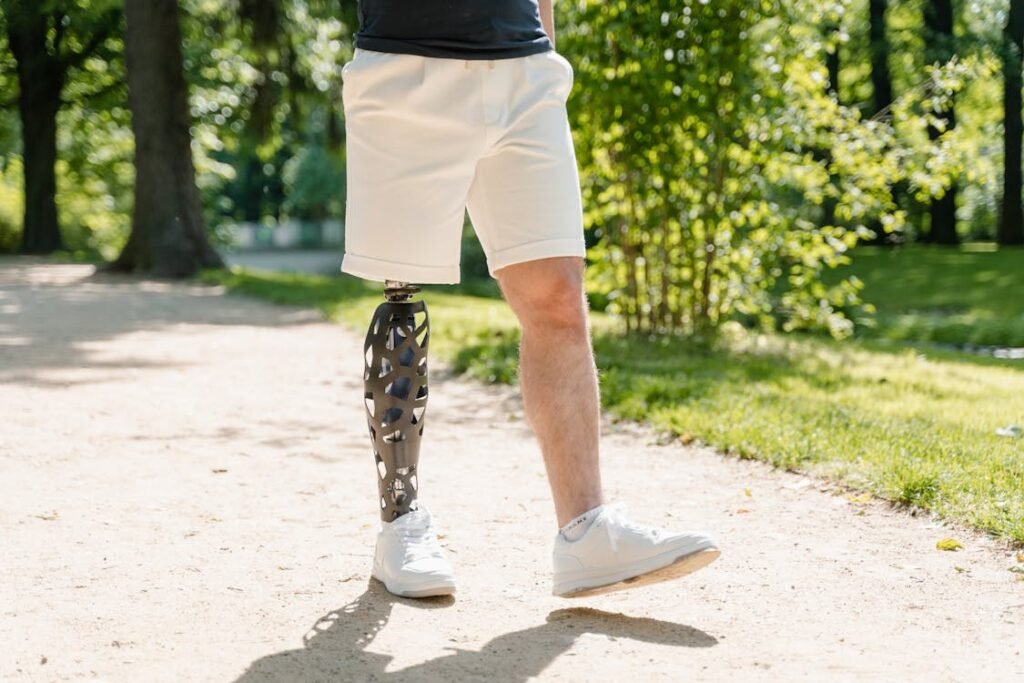
Long-Term Care Strategies
Caring for your prosthetic over the long term is essential to ensure its functionality, durability, and comfort.
While daily maintenance addresses immediate concerns, a comprehensive long-term care strategy focuses on preventing wear and tear, minimizing the effects of environmental exposure, and ensuring your prosthetic continues to meet your needs as they evolve.
By adopting proactive practices and partnering with professionals, you can extend the life of your prosthetic and maintain its performance.
The Importance of Routine Maintenance
Routine professional maintenance is a cornerstone of long-term prosthetic care. Over time, even minor exposure to sand, dirt, and debris can accumulate in areas that are difficult to reach during daily cleaning.
A prosthetist’s expertise is invaluable in identifying potential issues that might not be immediately visible, such as subtle misalignments or internal wear.
Regular maintenance appointments provide an opportunity to recalibrate the prosthetic, replace worn components, and apply protective treatments.
These sessions also allow you to discuss any changes in your mobility needs or environmental exposure, ensuring the prosthetic continues to align with your lifestyle.
At home, incorporate weekly inspections into your routine. Look for signs of wear, such as loose screws, rust, or cracks, and address these promptly to prevent further damage. Combining professional and personal maintenance helps keep your prosthetic in peak condition.
Adapting to Changing Environments
Over the course of months or years, the environments you navigate may change due to shifts in your routine, hobbies, or career. Adapting your prosthetic care strategies to these changes is essential for protecting your device.
For instance, if your activities involve frequent exposure to sand, dirt, or water, upgrading to more durable components or protective coatings can provide better resistance to these elements.
Modern advancements, such as corrosion-resistant materials or enhanced seals, help mitigate the risks associated with challenging conditions.
Discussing your lifestyle changes with your prosthetist ensures you’re equipped with the best tools for long-term protection. Whether it’s a new activity or a move to a different climate, they can recommend adjustments or upgrades to support your needs.
Replacing and Upgrading Components
Prosthetics are designed to be durable, but all devices have components that experience wear and tear over time. Replacing these parts before they fail is a key aspect of long-term care.
Components like liners, foot shells, or joints often have a finite lifespan, particularly when exposed to abrasive elements like sand or dirt.
Upgrading parts with more advanced options can also improve the prosthetic’s performance and longevity. For example, newer materials might offer greater flexibility, reduced weight, or increased resistance to environmental factors.
Investing in these upgrades not only enhances your prosthetic’s functionality but also minimizes the frequency of repairs or replacements.
Storage Practices for Longevity
Proper storage is often overlooked but plays a critical role in long-term prosthetic care. When not in use, storing your prosthetic in a clean, dry, and temperature-controlled environment protects it from dust, humidity, and extreme temperatures that can degrade materials.
If you use multiple prosthetics for different activities, rotate them appropriately to distribute wear evenly. Keeping each device in a dedicated storage case with compartments for spare parts and tools ensures they remain protected and ready for use.
For users who frequently travel, a durable travel case designed for prosthetics can provide additional protection against environmental exposure or accidental damage.
Monitoring Your Residual Limb
The health of your residual limb is directly tied to the performance of your prosthetic. Changes in limb size, shape, or sensitivity over time can affect the prosthetic’s fit and functionality.
Regularly monitor your residual limb for signs of irritation, swelling, or discomfort, particularly after long periods of use.
Discuss any changes with your prosthetist during routine check-ups. They can make necessary adjustments to the socket or liner to ensure a secure and comfortable fit.
Maintaining a close connection between your prosthetic and residual limb health is essential for long-term success.
Partnering With Professionals
A long-term care strategy thrives on collaboration with experienced professionals. Prosthetists bring technical expertise, while physical therapists and trainers provide insights into improving mobility and addressing challenges.
Planning for the Future
Long-term prosthetic care isn’t just about maintaining the present—it’s about planning for the future. As technology evolves, new advancements will emerge that can further enhance your prosthetic’s performance and durability.
Staying informed about these innovations ensures you’re prepared to incorporate them into your device when the time comes.
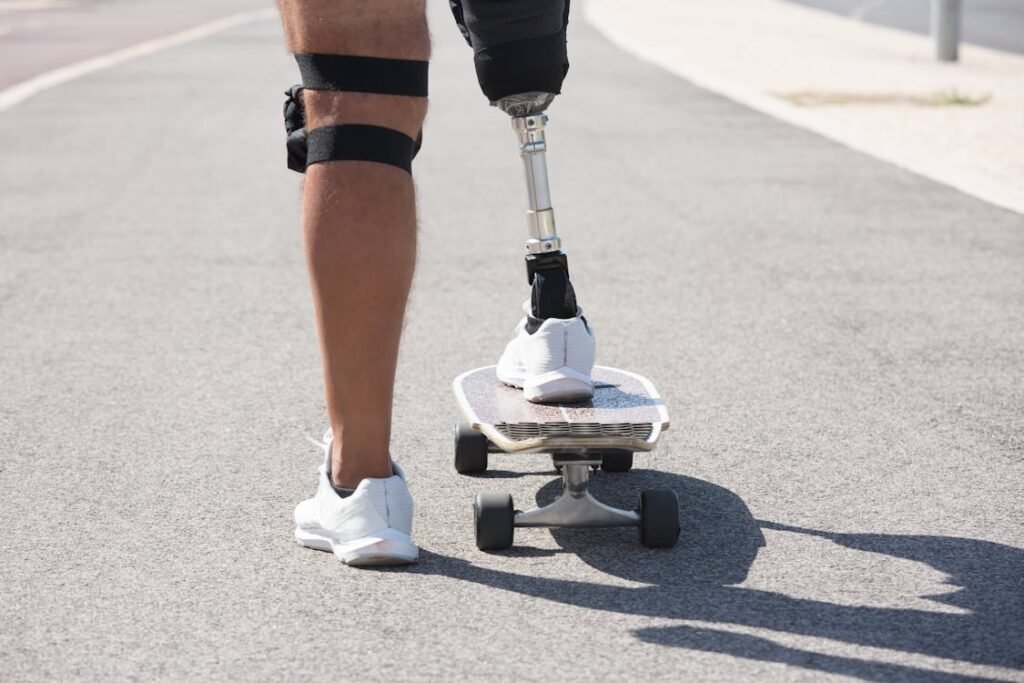
Adapting for Different Environments
Navigating diverse environments with a prosthetic device can be both empowering and challenging. Each setting, whether sandy beaches, dense forests, or bustling urban streets, introduces unique elements that can impact the functionality and longevity of your prosthetic.
Adapting your approach to these environments ensures your device remains reliable while allowing you to engage confidently in activities without unnecessary wear or damage.
Preparing for Sandy or Coastal Environments
Coastal areas, with their combination of sand, saltwater, and humidity, are some of the most demanding environments for prosthetics. Sand’s fine texture allows it to infiltrate joints and mechanisms, while saltwater can corrode metals and weaken seals.
Before heading to the beach, consider using a waterproof or sand-resistant cover to protect your prosthetic. These covers create a barrier that prevents particles from reaching sensitive areas, ensuring the device remains functional throughout your visit.
Rinse the prosthetic with fresh water immediately after exposure to saltwater to remove any corrosive residues and prevent long-term damage.
Walking on sand requires careful adjustment of movement. Loose sand can create uneven pressure on foot prosthetics, leading to debris accumulation or instability. Shorter, deliberate steps reduce the amount of sand kicked up and minimize its impact on your device.
For upper-limb prosthetics, protecting joints and sensors with lightweight sleeves or wraps adds an extra layer of defense against airborne sand. Cleaning these areas immediately after exposure helps maintain smooth operation and responsiveness.
Managing Forested or Rugged Terrains
Forested and rugged terrains introduce risks such as mud, dirt, and uneven ground that can challenge your prosthetic’s durability and stability. Dirt and mud often stick to surfaces, creating residue that hardens and clogs joints if not promptly addressed.
Before venturing into such environments, inspect your prosthetic for vulnerabilities, such as loose components or worn seals. Applying a lubricant to moving parts can create a protective barrier against dirt and reduce friction during use.
Foot prosthetics designed for rugged use, such as those with durable soles or enhanced grip, provide better traction on uneven ground.
Discuss these options with your prosthetist if you frequently engage in outdoor activities. Regularly cleaning the prosthetic during breaks ensures debris doesn’t accumulate, preventing long-term damage.
In muddy areas, avoid prolonged exposure to wet conditions, as moisture combined with dirt can accelerate material degradation. Wipe down the prosthetic after use and dry it thoroughly to maintain its performance.
Thriving in Urban Settings
Urban environments may appear less challenging, but they come with their own set of hazards, such as fine dust, grease, and uneven sidewalks. These elements can affect the smooth operation of prosthetic components or compromise their aesthetics over time.
To navigate urban settings effectively, establish a routine of frequent cleaning and inspections. Dirt and grime from city streets can settle into joints or accumulate on surfaces, causing wear if left unchecked.
Protective covers designed for everyday use offer a discreet way to shield your prosthetic from these elements.
When navigating crowded spaces, such as public transport or busy streets, be mindful of potential impacts or abrasions caused by tight quarters. Using additional padding or guards can reduce the risk of scratches or minor damage to your device.
Adapting to Extreme Weather
Different climates introduce unique challenges for prosthetics, particularly in extreme heat, cold, or humidity. High temperatures can cause certain materials to expand, affecting the fit or alignment of your prosthetic.
Heat-resistant components or protective coatings can mitigate these effects, ensuring continued reliability.
Cold climates can make materials brittle or stiff, reducing flexibility and comfort. Using thermal covers designed for prosthetics helps maintain a stable temperature and prevents discomfort during extended outdoor use.
Additionally, checking for cracks or stress points after exposure to freezing conditions is essential to identify and address potential damage early.
In humid environments, moisture accumulation can lead to rust or bacterial growth. Regular drying and the use of moisture-absorbing liners or desiccants protect against these risks, ensuring your prosthetic remains hygienic and functional.
Planning for Activity-Specific Adaptations
Certain activities, such as hiking, swimming, or cycling, place additional demands on your prosthetic. Planning for these activities involves understanding how your device interacts with the environment and making necessary adjustments.
For hiking, prosthetics with specialized grips or shock-absorbing features reduce strain on joints while improving stability on uneven terrain. Waterproof components are essential for swimming or water-based activities, as they prevent moisture from entering internal mechanisms.
Cycling prosthetics often require customized attachments to ensure compatibility with pedals, enhancing both safety and efficiency during the activity.
Working with your prosthetist to tailor your device to specific activities allows you to fully engage without compromising performance or durability.
Staying Proactive and Flexible
Adapting to different environments requires a proactive mindset and a willingness to adjust your approach as needed.
By understanding the specific challenges of each setting and preparing your prosthetic accordingly, you can minimize the impact of environmental factors on your device.
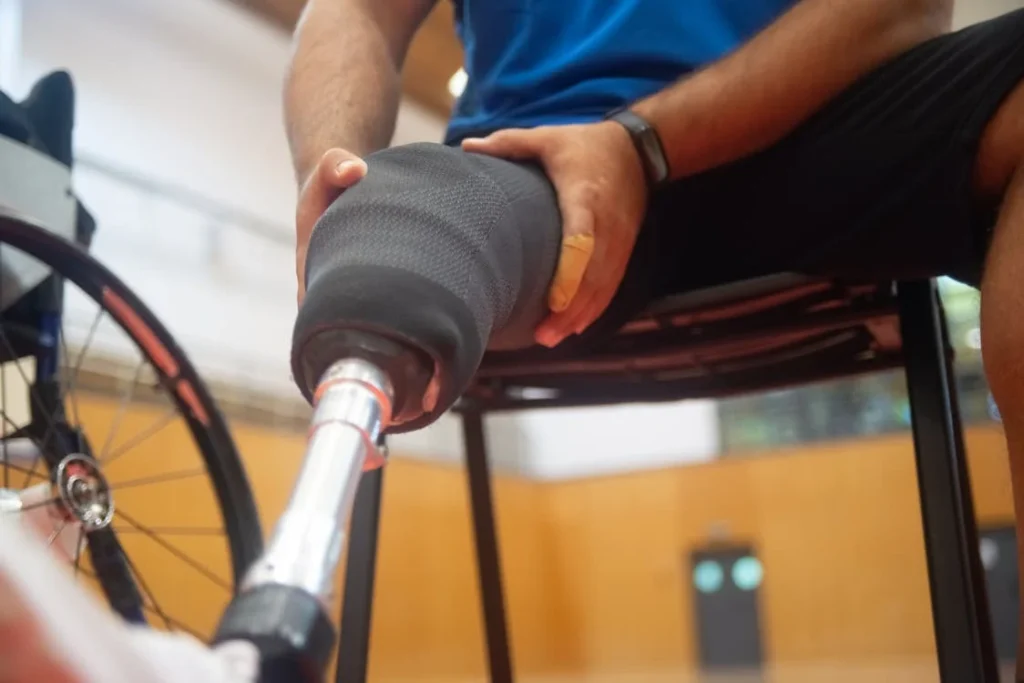
Dealing With Unexpected Damage
Even with careful maintenance and preventive measures, prosthetics can occasionally sustain unexpected damage.
Whether caused by environmental exposure, accidental impact, or normal wear and tear, addressing damage promptly is critical to maintaining the functionality and reliability of your prosthetic.
Strategic planning and proactive problem-solving help minimize disruptions and ensure your prosthetic continues to meet your needs.
Recognizing Signs of Damage
The first step in managing unexpected damage is identifying when something is wrong. Damage to prosthetics can manifest in various ways, such as unusual noises, reduced responsiveness, visible cracks, or discomfort during use.
These signs often indicate underlying issues that require attention before they escalate.
For electronic prosthetics, performance irregularities such as delayed responses, inconsistent movements, or error notifications may signal damage to internal components.
For mechanical devices, a decrease in smoothness or stability during movement can point to issues like debris infiltration, loose joints, or material fatigue.
Regularly inspecting your prosthetic for visible or functional abnormalities ensures you catch problems early. This vigilance prevents minor issues from compounding into larger, more costly repairs.
Temporary Solutions for Immediate Use
If your prosthetic sustains damage while you’re away from professional assistance, knowing how to perform basic fixes can help keep it functional until repairs are possible.
Carrying a small repair kit with tools such as an Allen wrench, spare screws, and a soft cleaning cloth allows you to address common issues on the spot.
For instance, if a joint becomes loose, gently tightening the screws can restore stability. If debris causes a joint to seize up, use compressed air or a soft brush to clear the area and restore movement.
These temporary measures ensure you can continue using your prosthetic with minimal interruption.
However, avoid attempting complex repairs or using unapproved adhesives, as these can exacerbate the damage or void your warranty. Temporary solutions are meant to provide short-term functionality, not replace professional care.
Managing Structural Damage
Structural damage, such as cracks, dents, or bent components, requires immediate attention to prevent further deterioration.
For foot prosthetics, damage to the sole or pylon can compromise balance and increase the risk of falls. For upper-limb devices, cracks in the socket or terminal device may impact grip strength or range of motion.
If structural damage occurs, limit your prosthetic use to essential tasks and avoid activities that could worsen the issue. Document the damage with clear photos and notes to share with your prosthetist during your next appointment.
Providing detailed information about how the damage occurred helps professionals diagnose the problem accurately and recommend effective solutions.
Addressing Damage to Electronic Components
Damage to electronic prosthetics can be particularly disruptive, as these devices rely on intricate systems to function. If your prosthetic’s sensors, wiring, or control systems are affected, troubleshooting requires careful handling to avoid further harm.
Begin by checking for obvious issues, such as loose connections or debris around sensors. Gently clean the affected areas with a dry cloth or soft brush, ensuring no moisture enters the device.
If the prosthetic still does not respond correctly, consult the manufacturer’s troubleshooting guide or reach out to your prosthetist for guidance.
In many cases, electronic issues require specialized tools and expertise to resolve. Avoid disassembling or attempting internal repairs unless instructed by a professional, as improper handling could void warranties or compromise safety.
Navigating Emergency Situations
In some cases, unexpected damage may render your prosthetic temporarily unusable. Planning for such scenarios ensures you can adapt without undue stress.
For example, keeping a backup prosthetic or spare components, if feasible, allows you to continue daily activities while repairs are underway.
If a backup device isn’t available, consider adjustments to your routine that accommodate the loss of functionality.
Reach out to local resources, such as prosthetic clinics or service providers, to explore repair or replacement options. Having contact information for these resources readily available can save valuable time in emergencies.
Traveling with your prosthetic introduces additional challenges, as access to repair services may be limited.
Research repair facilities near your destination before departure, and carry essential documentation such as warranty information, user manuals, and insurance details to streamline the repair process if needed.
Collaborating With Professionals
Dealing with unexpected damage underscores the importance of a strong partnership with your prosthetist. Professional evaluations are essential for assessing the extent of damage and implementing effective repairs.
Prosthetists have access to specialized tools and replacement parts that ensure your prosthetic is restored to optimal condition.
Long-Term Strategies for Resilience
While it’s impossible to prevent every instance of damage, adopting a long-term approach to care reduces the likelihood of unexpected issues.
Regular maintenance, strategic cleaning, and the use of protective measures help strengthen your prosthetic against environmental risks and physical stress.
Additionally, staying informed about advancements in prosthetic materials and technology allows you to explore upgrades that enhance durability and resistance to damage.
By incorporating these innovations, you can improve the reliability of your prosthetic and reduce the frequency of repairs.
Conclusion
Protecting your prosthetic from sand, dirt, and debris is essential for maintaining its functionality, durability, and comfort. These elements, while small, can cause significant wear and tear over time if left unaddressed. By taking proactive steps such as using protective covers, practicing mindful movement, and maintaining regular cleaning routines, you can shield your prosthetic from unnecessary damage.
At Robobionics, we’re dedicated to supporting you with innovative solutions and expert guidance tailored to your unique needs. Whether you’re seeking professional maintenance or exploring upgrades for enhanced protection, we’re here to help you make the most of your prosthetic. With the right care and attention, your prosthetic becomes more than a device—it’s your partner in living an active, independent life. Contact us today to learn how we can help you safeguard your prosthetic and keep moving forward with confidence.



